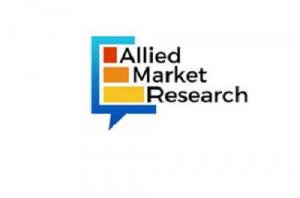Clean Mobility Trends Propel Fuel Cell Power System Market Toward $15.2 Billion by 2030
Fuel cell power systems are at the core of the hydrogen economy, driving a cleaner and more sustainable energy future.
WILMINGTON, DE, UNITED STATES, September 10, 2025 /EINPresswire.com/ -- According to a new report published by Allied Market Research, titled, “Fuel Cell Power System Market Size, Share, Competitive Landscape and Trend Analysis Report, by Fuel Cell Type (Solid Oxide Fuel Cell (SOFC) , Proton Exchange Membrane Fuel Cell (PEMFC) , Molten Carbonate Fuel Cell (MCFC) , Phosphoric Acid Fuel Cell (PAFC) , Others) , by Application (Residential, Commercial, Industrial) : Global Opportunity Analysis and Industry Forecast, 2024 - 2030" The global fuel cell power system market was valued at $4.9 billion in 2023, and is projected to reach $15.2 billion by 2030, growing at a CAGR of 17.7% from 2024 to 2030.The global fuel cell power system market is witnessing robust growth, driven by the rising demand for clean energy technologies and increasing adoption of hydrogen as a sustainable fuel source. Fuel cells provide efficient, reliable, and low-emission power solutions, making them suitable for transportation, stationary power generation, and portable applications. Growing investments in hydrogen infrastructure and supportive government policies are further accelerating market expansion worldwide.
𝗗𝗼𝘄𝗻𝗹𝗼𝗮𝗱 𝗣𝗗𝗙 𝗕𝗿𝗼𝗰𝗵𝘂𝗿𝗲: https://www.alliedmarketresearch.com/request-sample/A35077
𝗠𝗮𝗿𝗸𝗲𝘁 𝗗𝘆𝗻𝗮𝗺𝗶𝗰𝘀
1. Drivers
The market is primarily driven by the global shift toward decarbonization and stringent emission regulations. Fuel cell power systems offer high efficiency and reduced greenhouse gas emissions compared to conventional power systems, aligning well with climate targets. Government subsidies, tax benefits, and funding for hydrogen production and fuel cell deployment are creating a strong foundation for market growth.
2. Opportunities
Rapid technological advancements, such as improvements in proton exchange membrane (PEM) and solid oxide fuel cells (SOFC), are opening new opportunities across automotive, aerospace, and industrial sectors. The integration of fuel cells in electric vehicles, drones, and backup power systems provides a scalable pathway for future adoption. Emerging economies are also investing heavily in hydrogen economy projects, widening the growth prospects.
3. Challenges
Despite strong growth potential, the market faces challenges such as high capital costs, limited hydrogen refueling infrastructure, and concerns over storage and transportation of hydrogen. The reliance on platinum group metals as catalysts adds cost pressure, while safety issues related to hydrogen handling remain a barrier to widespread adoption.
4. Trends
A notable trend is the increasing focus on green hydrogen production using renewable energy, ensuring a completely clean energy cycle for fuel cell applications. Partnerships between automotive OEMs, energy providers, and governments are strengthening the commercialization of hydrogen-powered vehicles. Additionally, microgrids and decentralized energy systems powered by fuel cells are gaining attention in regions with unstable electricity supply.
5. Future Outlook
With continued investment in R&D and a supportive regulatory environment, the fuel cell power system market is expected to mature rapidly. Advancements in cost reduction, supply chain development, and large-scale hydrogen infrastructure deployment will be critical to achieving mainstream adoption. The long-term outlook is promising, as fuel cells are positioned as a key enabler of the global clean energy transition.
𝗦𝗻𝗮𝗴 𝗗𝗶𝘀𝗰𝗼𝘂𝗻𝘁: https://www.alliedmarketresearch.com/checkout-final/A35077
𝗦𝗲𝗴𝗺𝗲𝗻𝘁 𝗢𝘃𝗲𝗿𝘃𝗶𝗲𝘄
The fuel cell power system market overview is segmented based on type (proton exchange membrane fuel cells, solid oxide fuel cells, molten carbonate fuel cells, and others), application (transportation, stationary power, portable devices), and end-user (residential, commercial, industrial, utility). Transportation applications, particularly in electric vehicles and buses, are witnessing rapid adoption, while stationary applications are growing due to demand for reliable backup and off-grid power solutions.
𝗥𝗲𝗴𝗶𝗼𝗻𝗮𝗹 𝗔𝗻𝗮𝗹𝘆𝘀𝗶𝘀
North America and Europe dominate the fuel cell power system market, supported by strong government policies, large-scale hydrogen projects, and the presence of leading technology providers. The U.S., Germany, and the U.K. are at the forefront of fuel cell adoption in transportation and stationary applications.
Asia-Pacific is emerging as the fastest-growing region, driven by heavy investments from countries such as Japan, South Korea, and China. Japan is leading in fuel cell vehicles and residential applications, while China is rapidly scaling hydrogen refueling infrastructure to support commercial vehicle adoption. Other regions, including the Middle East, are exploring hydrogen exports to fuel global demand.
𝗙𝗼𝗿 𝗣𝘂𝗿𝗰𝗵𝗮𝘀𝗲 𝗜𝗻𝗾𝘂𝗶𝗿𝘆:
https://www.alliedmarketresearch.com/purchase-enquiry/A35077
𝗖𝗼𝗺𝗽𝗲𝘁𝗶𝘁𝗶𝘃𝗲 𝗔𝗻𝗮𝗹𝘆𝘀𝗶𝘀
The market is highly competitive, with key players focusing on innovation, cost reduction, and strategic partnerships. Leading companies such as Panasonic Life Solutions India Pvt. Ltd, JX Nippon Oil & Gas Exploration Corporation, TOSHIBA CORPORATION, Plug Power Inc., Fuel Cell Energy, Inc., NUVERA FUEL CELLS, LLC, Bloom Energy, Fuji Electric Co., Ltd., Doosan Fuel Cell Co., Ltd., Ballard Power Systems are investing in R&D to enhance fuel cell efficiency and durability.
Collaborations between fuel cell manufacturers, automotive OEMs, and utility providers are shaping the competitive landscape. Mergers, joint ventures, and public-private partnerships are playing a critical role in expanding commercialization and achieving economies of scale.
𝗞𝗲𝘆 𝗙𝗶𝗻𝗱𝗶𝗻𝗴𝘀 𝗼𝗳 𝘁𝗵𝗲 𝗦𝘁𝘂𝗱𝘆
• The global fuel cell power system market is expanding rapidly due to rising demand for clean and efficient energy solutions.
• Transportation applications, especially fuel cell electric vehicles (FCEVs), are leading market adoption.
• High costs and infrastructure limitations remain key challenges but are being addressed through R&D and policy support.
• Asia-Pacific is the fastest-growing market, with Japan, South Korea, and China spearheading adoption.
• Strategic collaborations and hydrogen economy initiatives are accelerating commercialization globally.
𝗧𝗿𝗲𝗻𝗱𝗶𝗻𝗴 𝗥𝗲𝗽𝗼𝗿𝘁𝘀 𝗶𝗻 𝗜𝗻𝗱𝘂𝘀𝘁𝗿𝘆:
Fuel Cell Balance of Plant (BOP) Market
https://www.alliedmarketresearch.com/global-fuel-cell-balance-of-plant-market-A14523
Hydrogen Fuel Cell Market
https://www.alliedmarketresearch.com/hydrogen-fuel-cell-market
Stationary Fuel Cell Market
https://www.alliedmarketresearch.com/stationary-fuel-cell-market-A07838
China and Japan Stationary Fuel Cell Market
https://www.alliedmarketresearch.com/china-and-japan-stationary-fuel-cell-market-A53551
Microbial Fuel Cell Market
https://www.alliedmarketresearch.com/microbial-fuel-cell-market-A17181
Fuel Cell Market
https://www.alliedmarketresearch.com/fuel-cell-market
David Correa
Allied Market Research
+1 5038946022
email us here
Visit us on social media:
LinkedIn
Facebook
YouTube
X
Legal Disclaimer:
EIN Presswire provides this news content "as is" without warranty of any kind. We do not accept any responsibility or liability for the accuracy, content, images, videos, licenses, completeness, legality, or reliability of the information contained in this article. If you have any complaints or copyright issues related to this article, kindly contact the author above.

